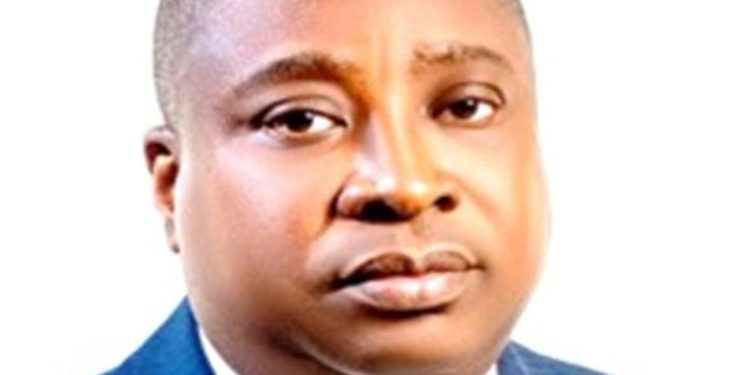The Monetary Policy Committee (MPC) of the Bank of Sierra Leone (BSL) held a crucial meeting on September 30, 2024, under the chairmanship of Dr. Ibrahim L. Stevens, Governor of the BSL. In this meeting, the MPC reviewed the macroeconomic conditions in both global and domestic contexts. After careful deliberation, the MPC recommended increasing the Monetary Policy Rate (MPR) by 0.50 percentage points to 24.75 percent. This decision reflects the MPC’s ongoing commitment to controlling inflation and ensuring sustainable growth. This article will delve into the key considerations and implications of this monetary policy decision, analyzing global and domestic economic developments and what they mean for Sierra Leone’s fiscal and monetary stability.
The MPC’s review of global economic conditions revealed a relatively stable global economy. According to the July 2024 edition of the International Monetary Fund’s (IMF) World Economic Outlook, global GDP growth is expected to remain steady at 3.2 percent in 2024, edging up to 3.3 percent in 2025. Additionally, global inflation is projected to decrease from 5.9 percent in 2024 to 4.4 percent in 2025. These developments, coupled with stronger trade and favorable financial conditions in advanced and emerging economies, set a positive tone for global economic activity.
While global economic growth shows promise, the MPC recognized ongoing geopolitical risks, such as the Russia-Ukraine conflict and military tensions in the Middle East. These uncertainties could disrupt global trade flows, potentially impacting Sierra Leone’s economy, especially in terms of rising production costs and inflationary pressures. Despite these risks, the gradual easing of global inflation, particularly in advanced economies, is expected to have a positive influence on Sierra Leone’s inflation rate through the lowering of import prices.
The global economic environment provides an essential backdrop for understanding domestic economic developments in Sierra Leone. As global trade and inflation patterns shift, they inevitably influence the small, open economy of Sierra Leone, affecting its inflation rate, exchange rate stability, and overall economic growth.
One of the most significant domestic economic developments discussed during the MPC meeting was the moderation in inflationary pressures over the past ten months. Sierra Leone’s headline inflation dropped by 29.10 percentage points, from 54.59 percent in October 2023 to 25.49 percent in August 2024. This decrease in inflation is largely attributed to a combination of factors, including the tight monetary policy pursued by the BSL, relative exchange rate stability, prudent fiscal policy, and moderating global commodity prices.
The decline in inflation offers a reprieve to Sierra Leonean households, who have been grappling with rising prices for both food and non-food items in recent years. Nevertheless, the MPC identified several risks that could threaten the continued decline in inflation. These include disruptions in global supply chains due to geopolitical tensions, potential trade fragmentation, climate-related risks, and the possible depreciation of the Leone, Sierra Leone’s national currency.
Despite the progress in bringing down inflation, the MPC emphasized the need for the BSL to remain relentless in its efforts to achieve price stability. A sustained reduction in inflation would enhance the competitiveness of the economy, attract international capital flows, and foster investment. The primary goal of the BSL’s monetary policy remains ensuring a low inflation environment to support long-term economic stability and growth.
The MPC’s review of Sierra Leone’s growth prospects paints a somewhat mixed picture. Following a recent rebasing of Sierra Leone’s GDP, the real GDP growth rate for 2024 is expected to be 4.0 percent. While this is a positive figure, it represents a slowdown from the 5.7 percent growth recorded in 2023. The primary factor contributing to this slower growth is uncertainty surrounding output in the mining sector, which has traditionally been a significant contributor to the country’s GDP.
However, growth is projected to pick up slightly in 2025, with an anticipated expansion in agricultural activities, a recovery in the mining sector, and continued macroeconomic stability. The MPC also highlighted the improvement in business confidence, as reflected in the Bank’s Composite Index of Economic Activities (CIEA), which showed an uptick in economic activities in the second quarter of 2024.
While the growth outlook appears favorable, the MPC acknowledged several vulnerabilities. Key among these are the ongoing geopolitical tensions, particularly in the Middle East, which could disrupt trade flows and weaken economic activity in Sierra Leone. As a small, trade-dependent economy, Sierra Leone remains highly vulnerable to external shocks, underscoring the importance of diversifying its economic base and strengthening domestic resilience.
Sierra Leone’s external sector showed some signs of improvement in the second quarter of 2024, as the country’s trade deficit narrowed from USD 142.4 million in the first quarter to USD 115.6 million in the second quarter. This improvement was driven by an increase in export receipts, which more than offset the rising costs of imports.
Despite this positive development, the gross foreign exchange reserves of the Bank of Sierra Leone decreased slightly, covering only two months of imports compared to 2.3 months in the first quarter of 2024. The reduction in foreign reserves was primarily due to outflows related to external debt service payments and the cost of imported goods and services.
Looking ahead, the MPC expressed optimism about the future of Sierra Leone’s external sector, particularly in light of the recent staff-level agreement between the Government of Sierra Leone and the IMF for a new Extended Credit Facility (ECF) program. The anticipated approval of this program is expected to catalyze additional financial support from development partners, helping to bolster foreign reserves and support macroeconomic stability.
In addition, ongoing negotiations with development partners for climate-related financing, coupled with the recent signing of the Millennium Challenge Corporation (MCC) Compact, provide further opportunities for boosting Sierra Leone’s external financial position in the coming years.
On the fiscal front, domestic revenue mobilization in Sierra Leone improved by 9.4 percent in the second quarter of 2024 compared to the first quarter. This is a positive sign that the fiscal authorities are making strides in boosting government revenues. However, the overall fiscal deficit widened marginally during the same period, due to increased government discretionary spending.
The MPC also noted a slight deterioration in the primary deficit, which excludes interest payments on public debt. This deficit increased from NLe0.2 billion in the first quarter of 2024 to NLe0.3 billion in the second quarter, highlighting the ongoing fiscal challenges facing the government.
The Committee stressed the importance of continued fiscal consolidation to strengthen Sierra Leone’s fiscal position and reduce public debt to sustainable levels. Fiscal consolidation is not only critical for long-term debt sustainability but also essential to support the BSL’s disinflationary efforts. In this regard, close coordination between fiscal and monetary authorities is crucial to ensuring that Sierra Leone remains on a path to macroeconomic stability.
In terms of monetary developments, the second quarter of 2024 saw contractionary trends in key monetary aggregates, particularly Reserve Money (RM) and Broad Money (M2). This contraction reflects a decline in the Net Foreign Assets (NFA) of both the BSL and the broader banking system. The decrease in Reserve Money, a key indicator of the BSL’s monetary policy stance, indicates that the BSL is effectively managing liquidity to contain inflation.
Private sector credit by commercial banks increased slightly during the second quarter of 2024, signaling a modest improvement in lending to businesses. However, high lending rates remain a concern, as they pose challenges for private sector investment and growth. The current high yield on government securities also raises concerns about debt sustainability, as it increases the cost of government borrowing.
To address these issues, the MPC emphasized the need for close coordination between fiscal and monetary policies to reduce the yield on government securities and manage the domestic debt burden. The MPC’s decision to increase the MPR by 0.50 percentage points to 24.75 percent is a reflection of its determination to maintain a tight monetary policy stance and bring inflation down to desired levels.
The MPC’s assessment of Sierra Leone’s financial system stability was largely positive, with key Financial Soundness Indicators (FSIs) suggesting that the banking system remains well-capitalized, profitable, and safe. Asset quality in the banking sector continued to improve, with the ratio of Non-Performing Loans (NPLs) staying below the statutory limit of 10 percent.
However, the MPC cautioned that banks’ heavy reliance on government securities for income could pose risks to the stability of the financial system. In the event of a sharp decline in the yield on these securities, bank profitability could be adversely affected, potentially undermining the stability of the financial system. Moreover, the crowding-out effect of government borrowing means that lending to the private sector remains constrained, limiting the potential for private sector-led growth.
The MPC also flagged the increasing risks of cybercrimes and fraud in the banking system. To mitigate these risks, the BSL must continue to strengthen its regulatory and supervisory oversight of the banking system, ensuring that financial institutions remain resilient in the face of emerging challenges.
The September 2024 MPC meeting underscored the complex challenges facing Sierra Leone’s economy. While progress has been made in reducing inflation and narrowing the trade deficit, significant risks remain, particularly in the areas of fiscal management, external vulnerabilities, and financial system stability.
In conclusion, the Monetary Policy Committee (MPC) of the Bank of Sierra Leone (BSL) has decided to increase the Monetary Policy Rate (MPR) to 24.75 percent in response to persistent inflationary pressures, despite the progress made in reducing inflation over the past months. Global economic improvements and a steady domestic economy were acknowledged, but the MPC remains cautious about the risks posed by geopolitical tensions, trade disruptions, and other uncertainties. The Committee’s decision reflects a continued commitment to price stability, while aiming to further moderate inflation and ensure long-term economic growth and financial stability in Sierra Leone.













